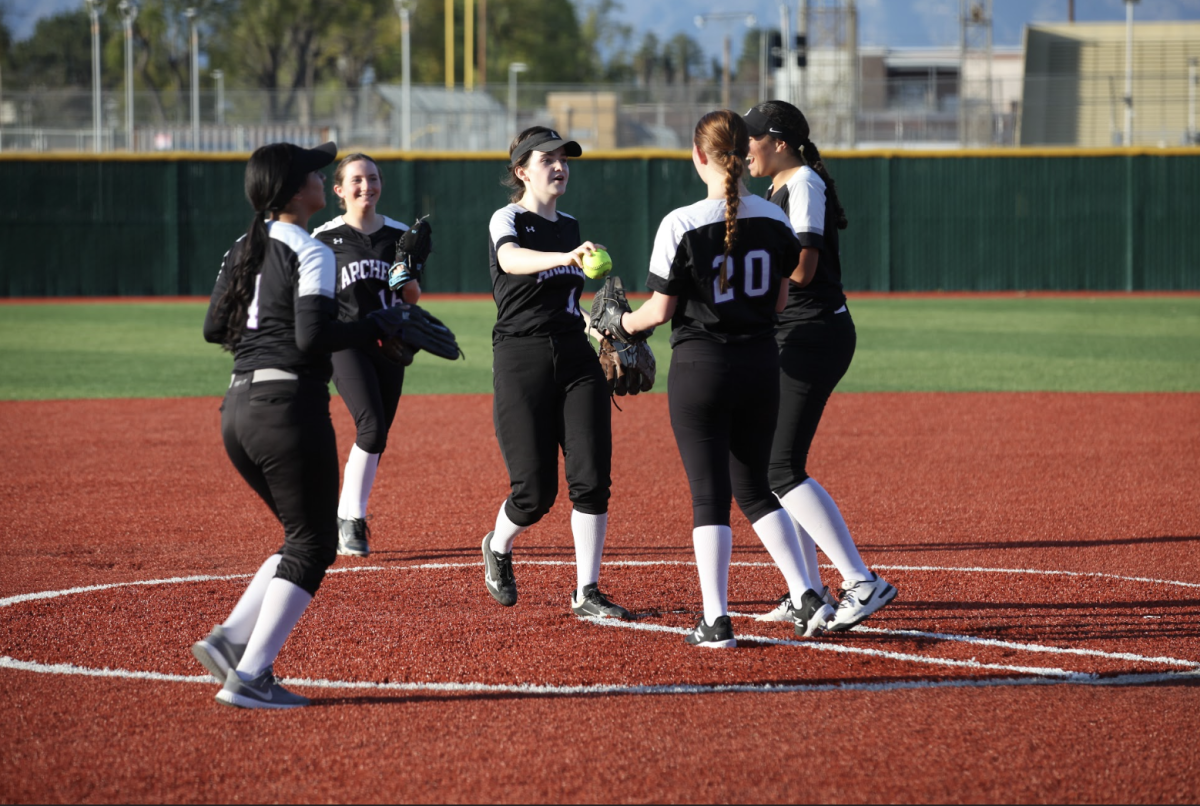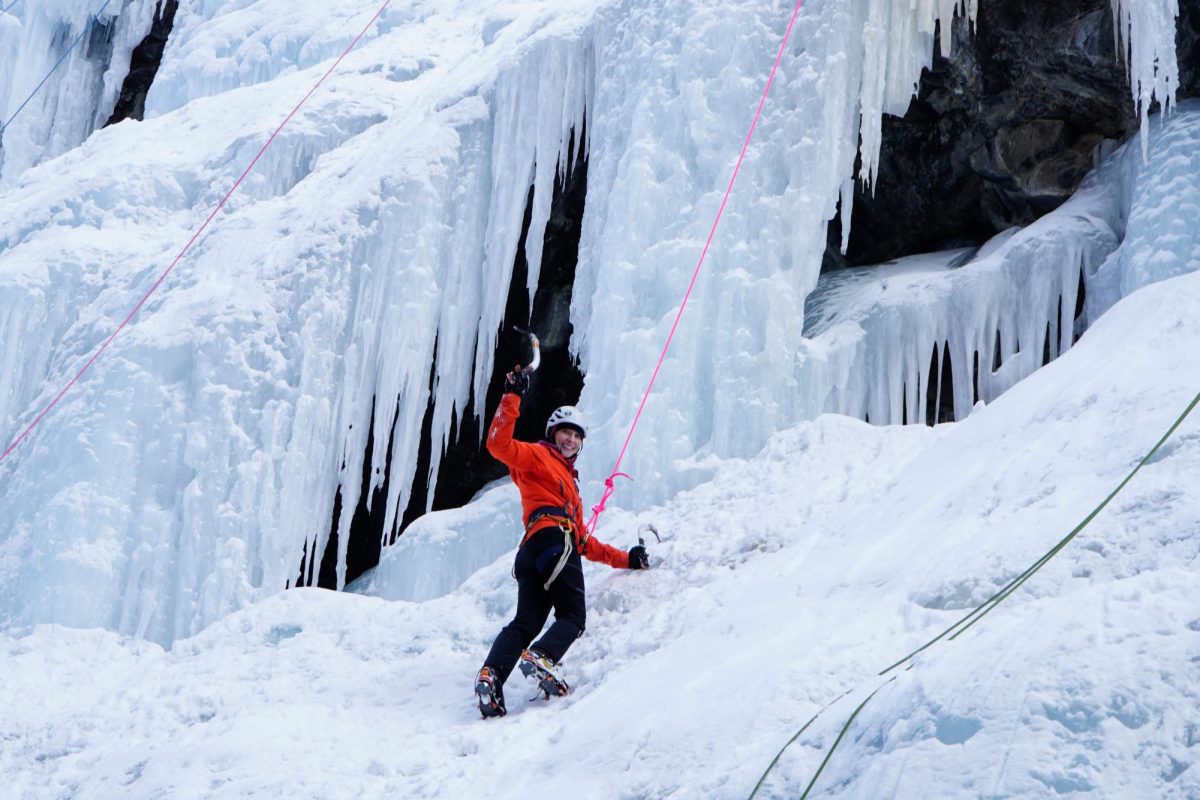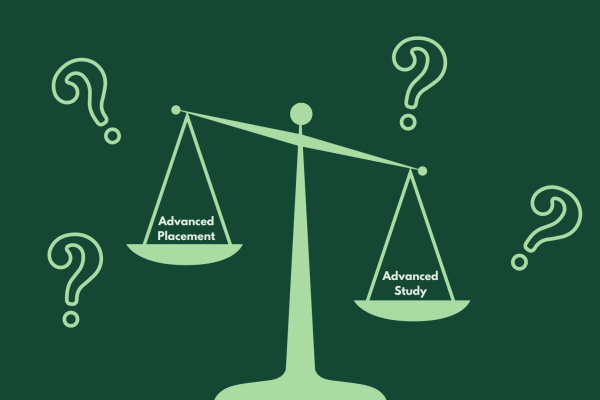Op-Ed: Clickbait negatively impacts our trust in the media
Photo credit: Melinda Wang
Pictured is an example of clickbait in the form of a YouTube title and thumbnail. Clickbait can come in the form of excessive and over-the-top thumbnails and pictures in order to catch the attention of potential viewers. (Graphic Illustration by Melinda Wang)
May 23, 2023
Most YouTube channels strive to gain subscribers; a good thumbnail, title and a little bit of luck can often help an aspiring YouTuber gain a decent following. Some channels try to appeal to an even larger audience by creating videos with “clickbait” titles.
According to Merriam-Webster, “clickbait” is “something (such as a headline) designed to make readers want to click on a hyperlink especially when the link leads to content of dubious value or interest.”
Clickbait is infamously known to lead unsuspecting viewers into traps of false information. I’m sure you may have been intrigued by some of these common examples of clickbait titles on Youtube: “You’ll Never Believe…”, “This is What Happens if You…” and “How to Achieve Results Using This One Weird Trick.”
I often fell for clickbait videos in elementary school. I distinctly remember the title that led me to a video about how a man’s adventure in an abandoned orphanage had “gone wrong,” which I so firmly believed to be true. After I watched the video, I was disappointed to see nothing in the man’s adventure had “gone wrong,” since all he did was explore an abandoned orphanage and act scared. As a fifth grader, I didn’t know any better; I was what people call “clickbaited.”
So, what exactly is so bad about clickbait?
Over the years, I’ve seen clickbait slowly fade from YouTube and reemerge in the form of satirical TikToks, Instagram reels and misleading article headlines. We live in a country where the credibility of article headlines is constantly being questioned, and clickbait does nothing but make people lose trust in the media even more.
Having misleading article headlines, deceptive YouTube titles or inaccurate social media ads can undermine the authenticity of the media we consume and subsequently make readers lose trust in content from sources, no matter the credibility of that source. For example, after I watched the video of the man in the orphanage, I grew wary of YouTube videos that promoted similar thumbnails and titles.
Clickbait doesn’t genuinely inform or educate, as it is only used as a method to gain clicks. In the case of journalism, clickbait does nothing to ensure that readers have access to an article headline that accurately describes its content. After readers fall for clickbait, they are left feeling disappointed with the content.
In many cases, viewers are unwilling to revisit websites because they associate the content of that website with clickbait they’ve seen before. For example, I read a Huffington Post article thinking I would learn about the one food dermatologists never eat, but instead read about the effects of multiple food groups on our skin. I only wanted to learn about a singular food that was universally agreed upon to be bad for our skin, but since the article didn’t convey the information from the headline, I was left with a bad impression of the accuracy of the Huffington Post’s articles.
Even now, I try to not watch or read any sort of content that appears deceptive based on its title or headline. I believe clickbait is a huge waste of my time. It not only disappoints me, but it also blurs the line between false news and actual news. It dampens the purpose of media by deceiving others into clicking something likely to be for entertainment purposes disguised as news.
Recently, despite my efforts, I unknowingly fell for clickbait by clicking on an article explaining why we as humans are still on Earth even after the world has “ended.” The article later specified Earth was only predicted to end, and while I was happy the world was not ending, I was disappointed such an article was published with a deceptive headline for the purpose of garnering views.
My slip-up only made me more aware of what clickbait may look like and inspired me to look for patterns in clickbait to recognize in the future. For example, I learned clickbait often utilizes provocative language like “the best,” “the worst” and “unbelievable.” Clickbait also uses pushy phrases like “don’t miss out” or “you’ll never believe” to try and get potential readers to see the article or video as more entertaining or interesting than it actually is.
Nowadays, the popularity of clickbait is declining, but it doesn’t change the fact that clickbait is essentially a trap that causes readers and viewers to lose trust in the credibility of media. So, if you’re thinking about creating content, remember to be clear and concise in your titles to ensure you’re not misleading anyone.
The clear distinction between a creative title or headline in comparison to clickbait is good headlines and titles are relevant to the article or video itself. Maintaining relevance and accuracy in titles, thumbnails and headlines is the key to building trust among viewers and rebuilding the trust people put in the media.




![Freshman Milan Earl and sophomore Lucy Kaplan sit with their grandparents at Archer’s annual Grandparents and Special Friends Day Friday, March 15. The event took place over three 75-minute sessions. “[I hope my grandparents] gain an understanding about what I do, Kaplan said, because I know they ask a lot of questions and can sort of see what I do in school and what the experience is like to be here.](https://archeroracle.org/wp-content/uploads/2024/03/grandparents-day-option-2-1200x800.jpg)




























































